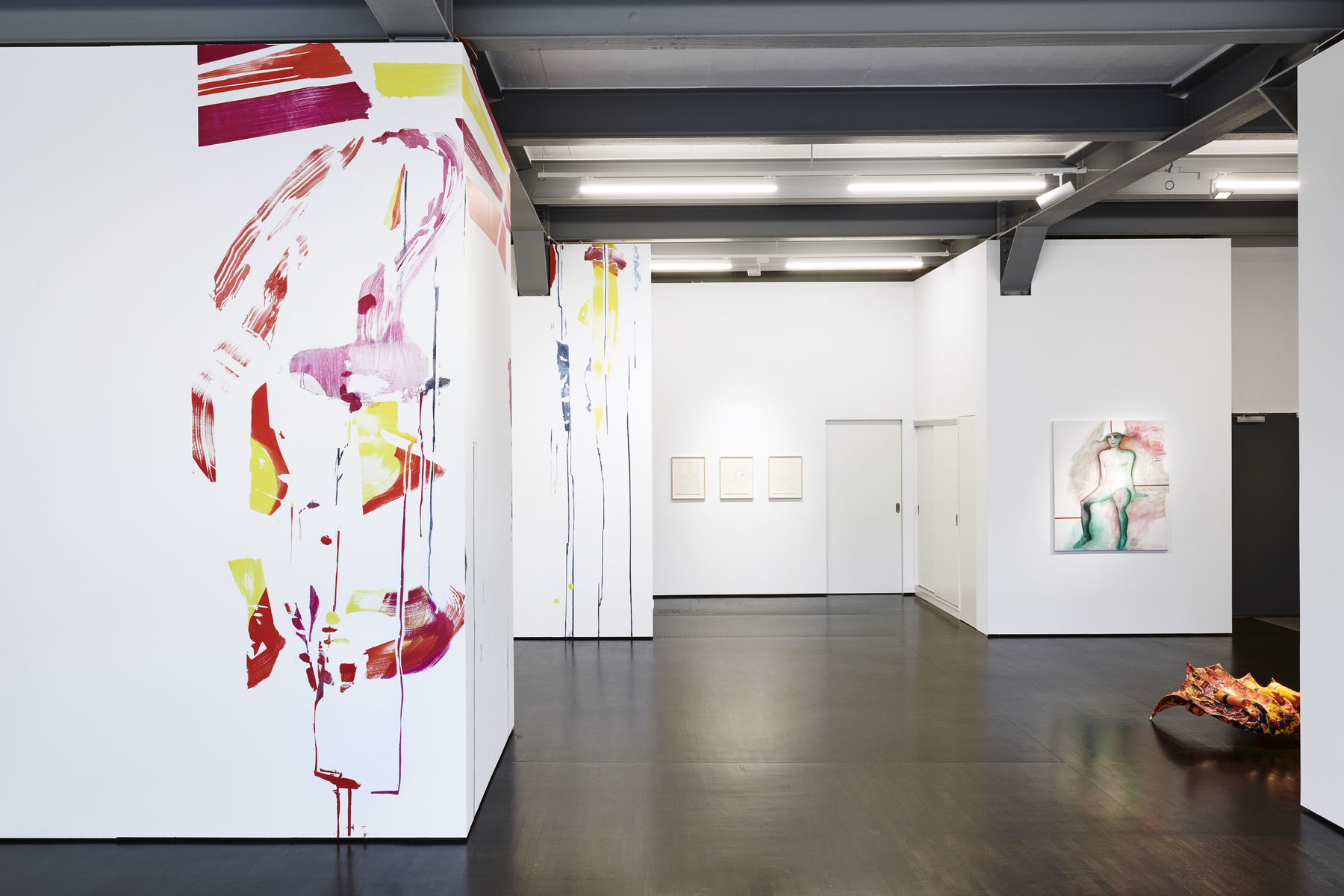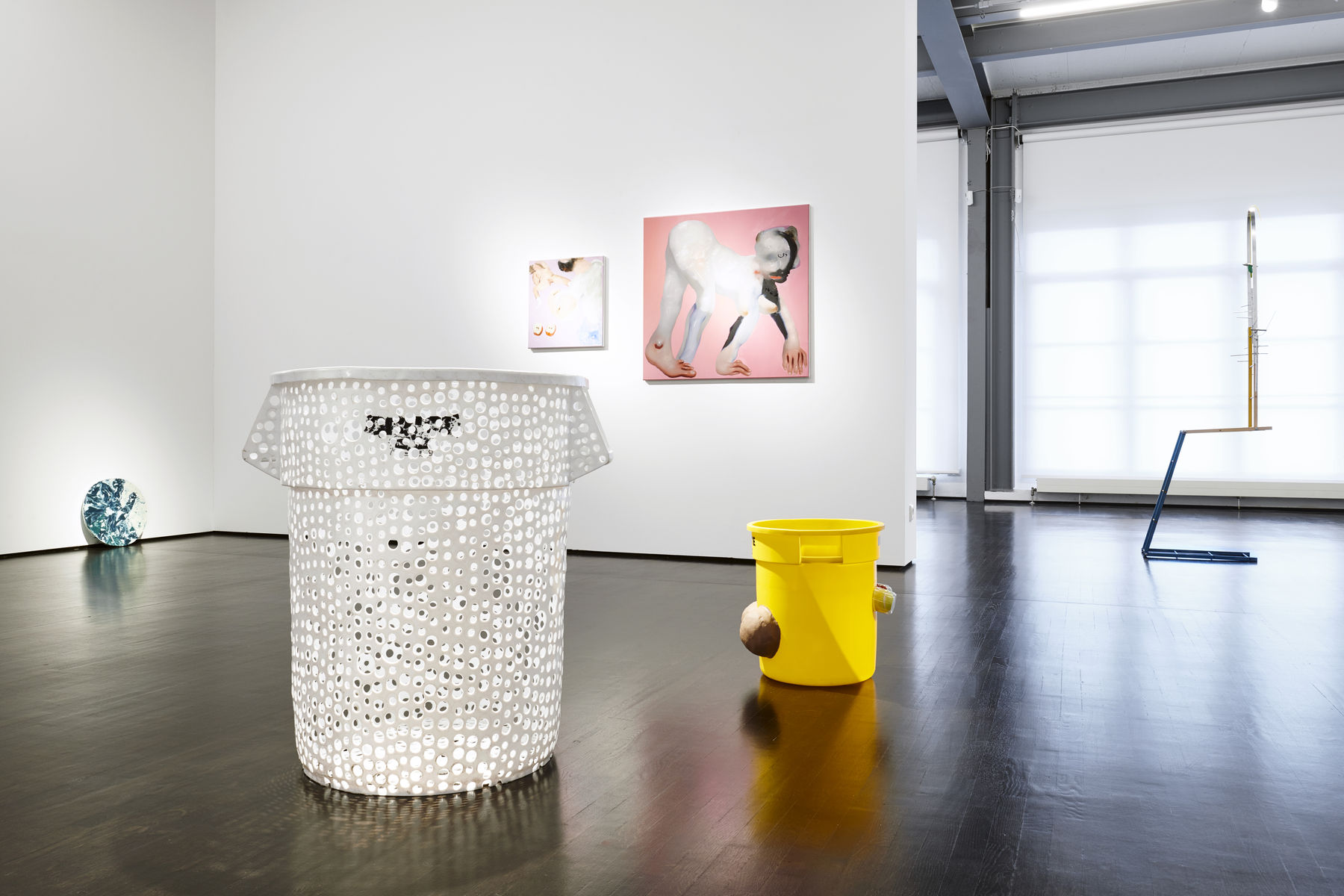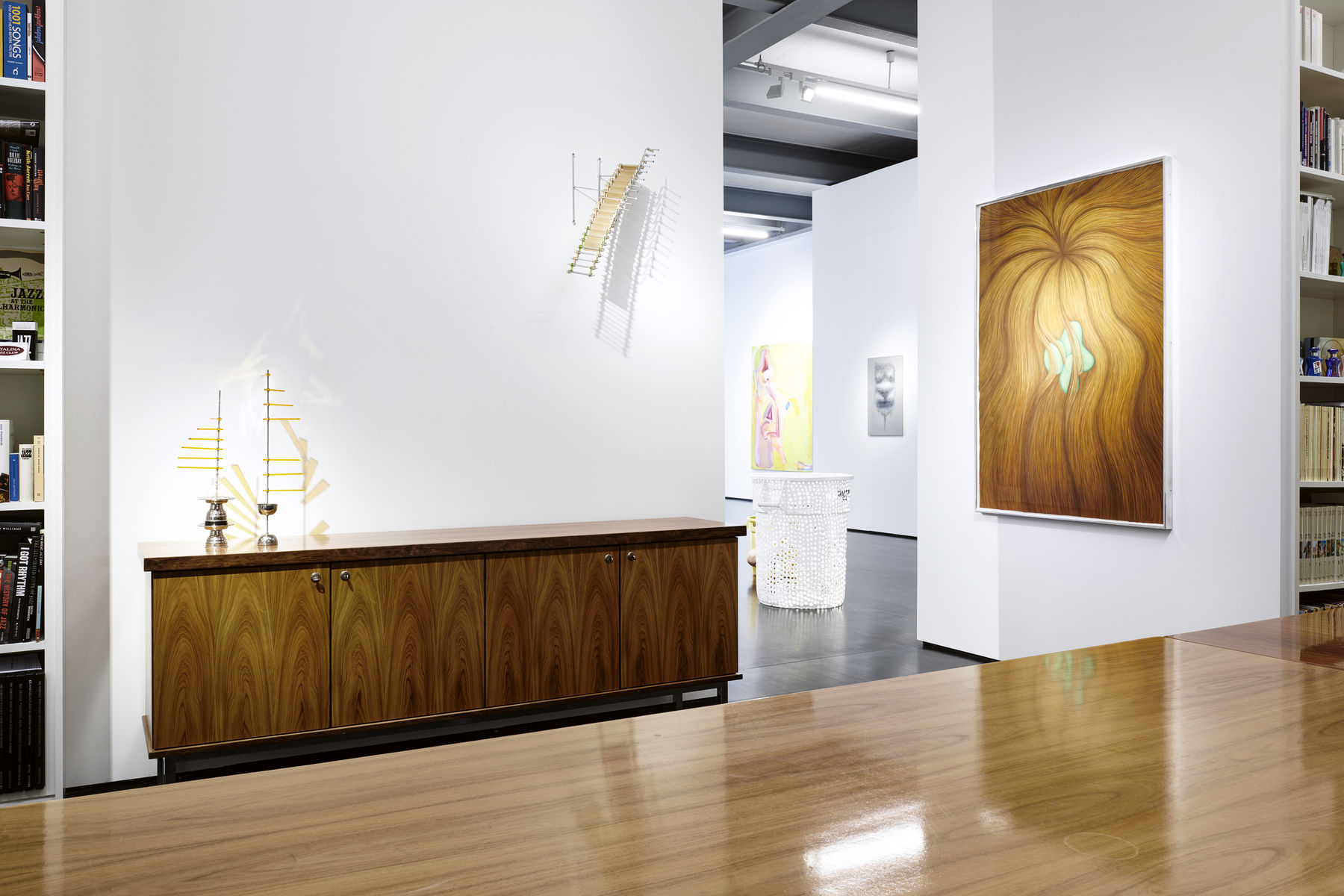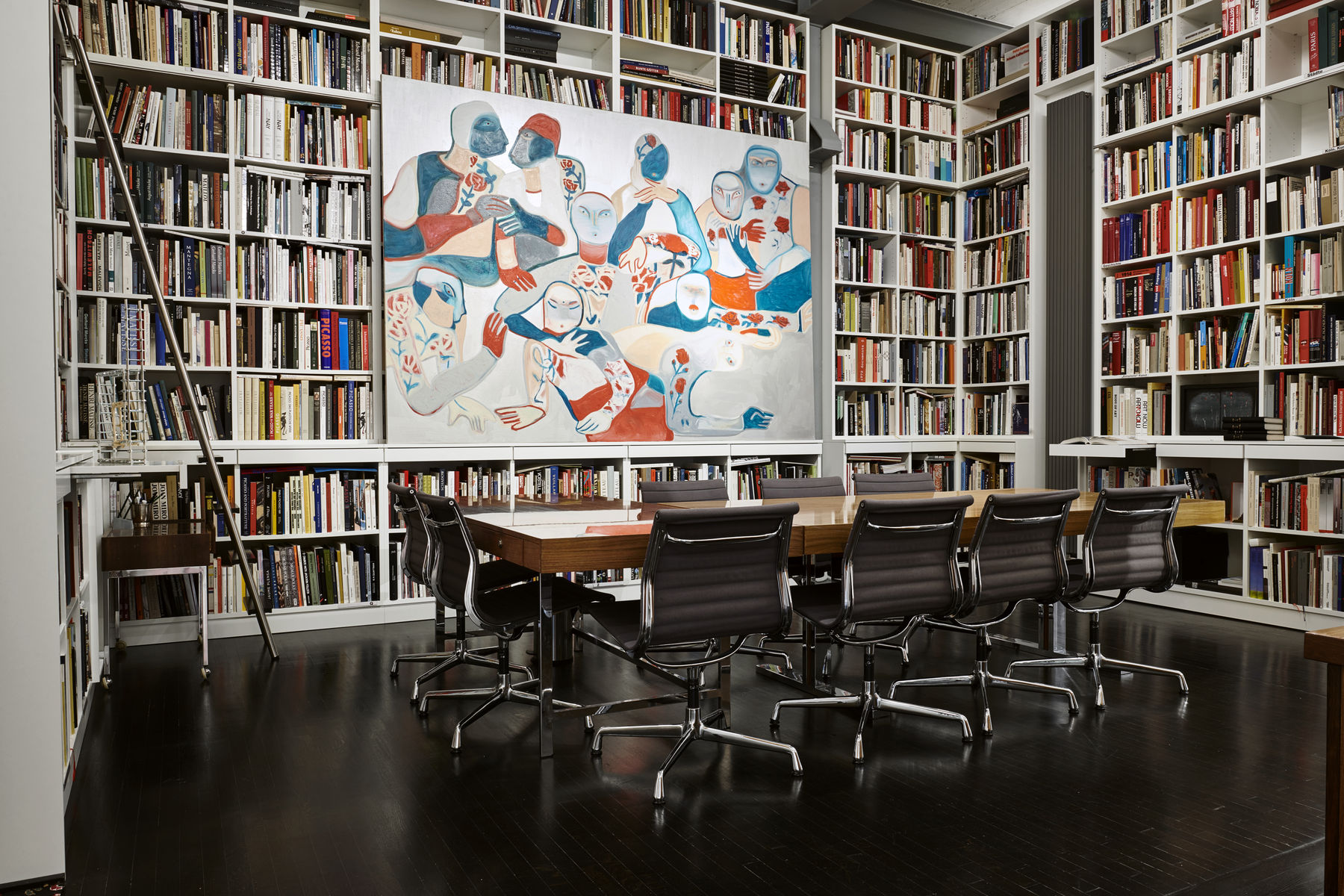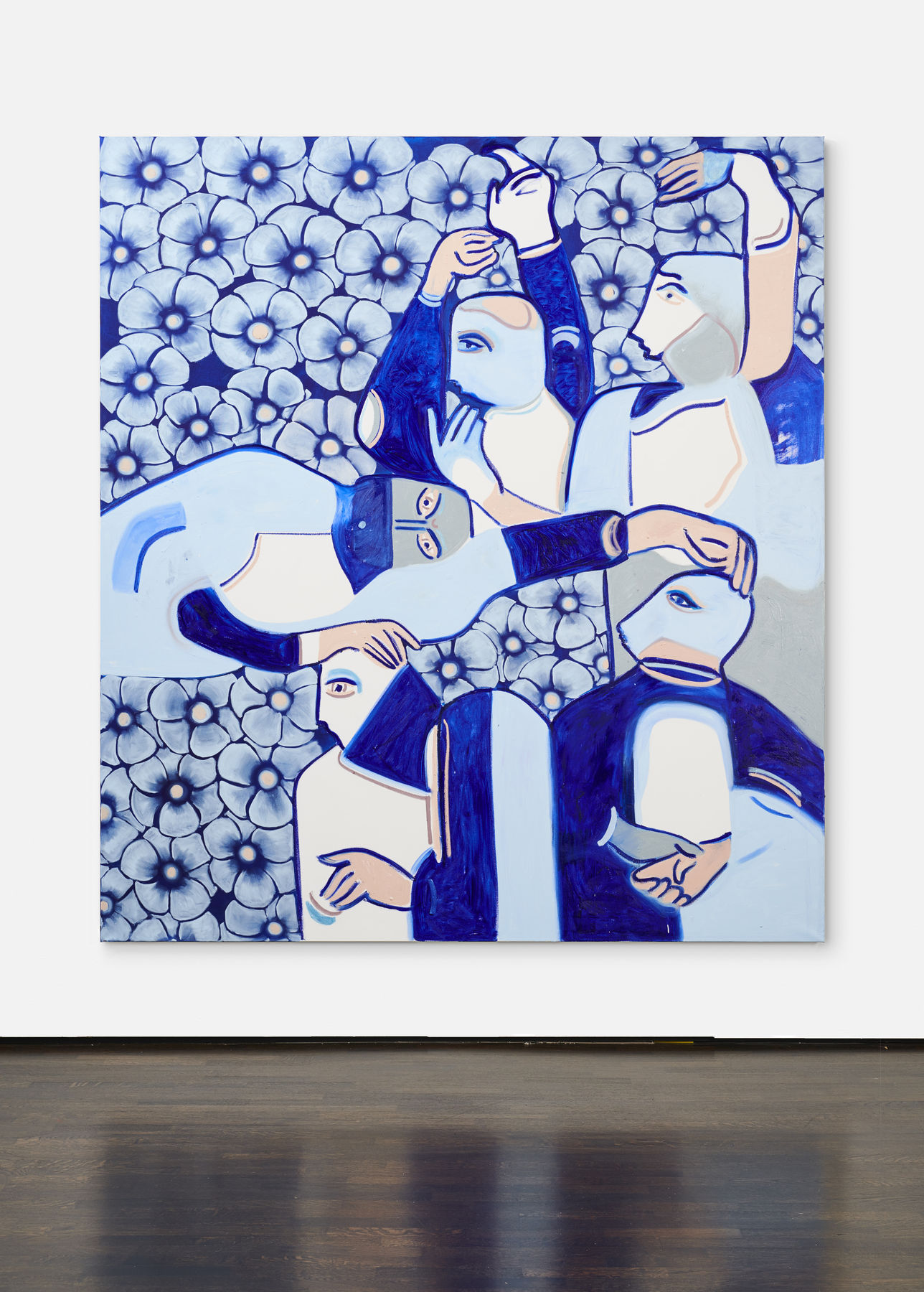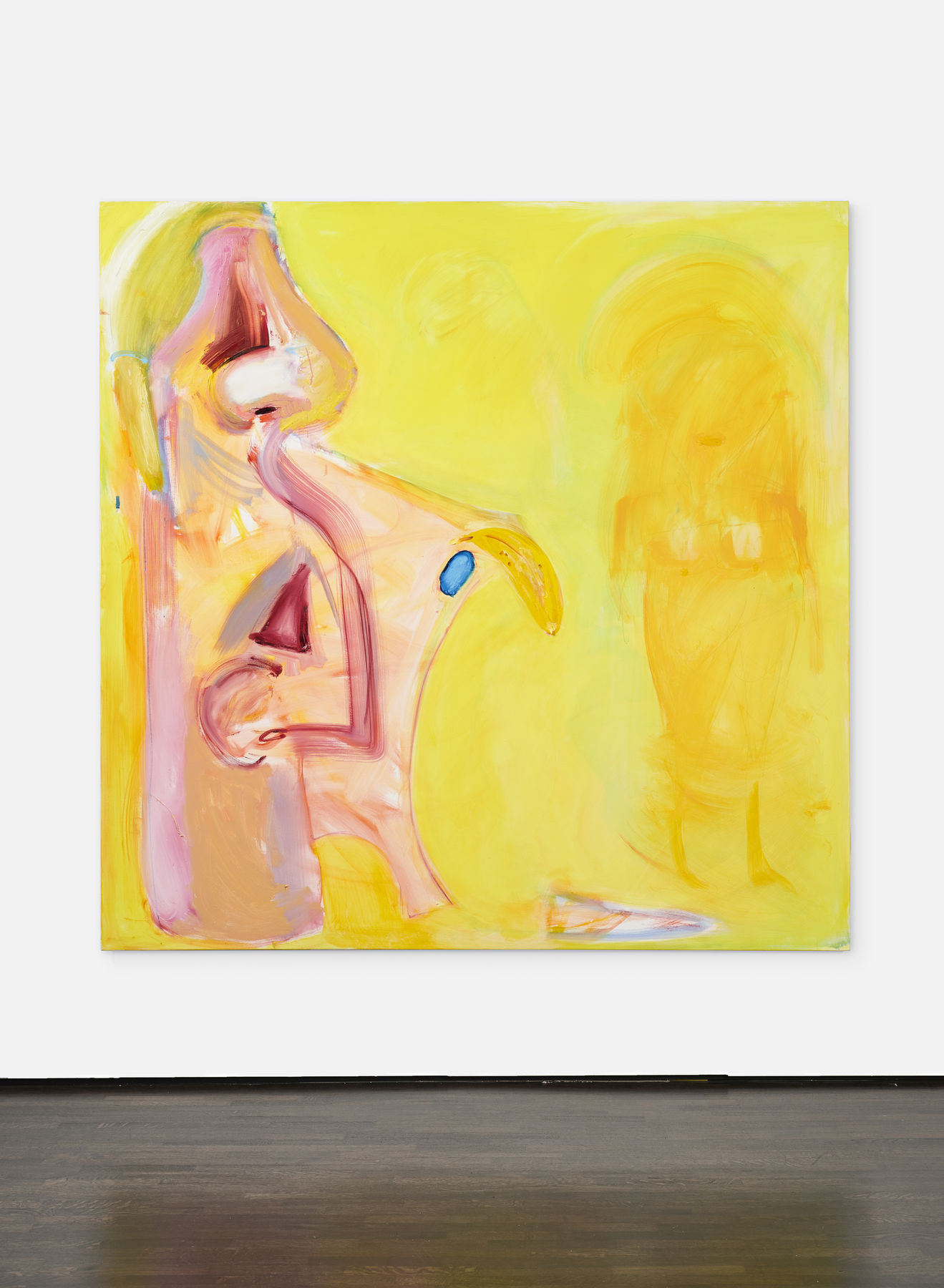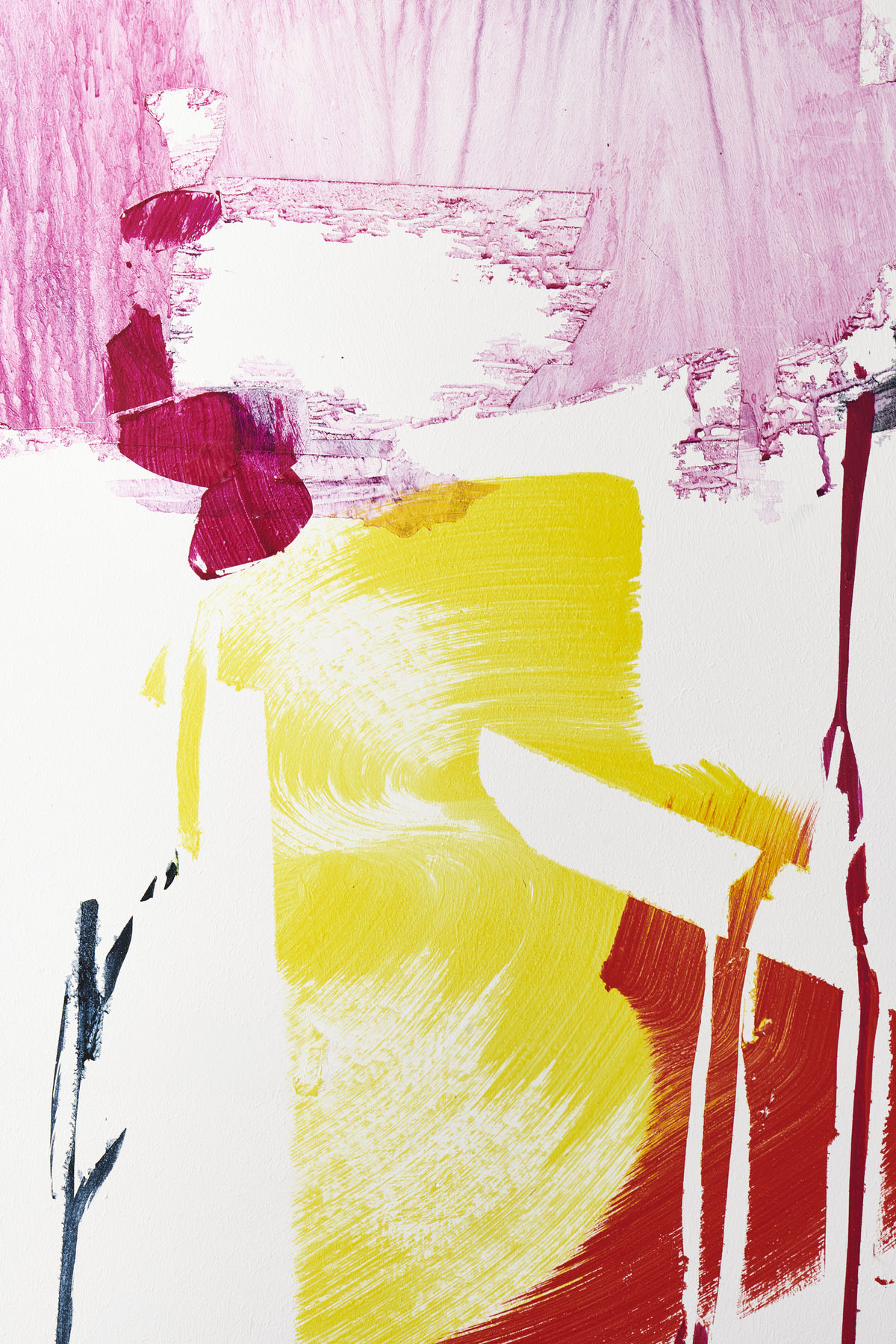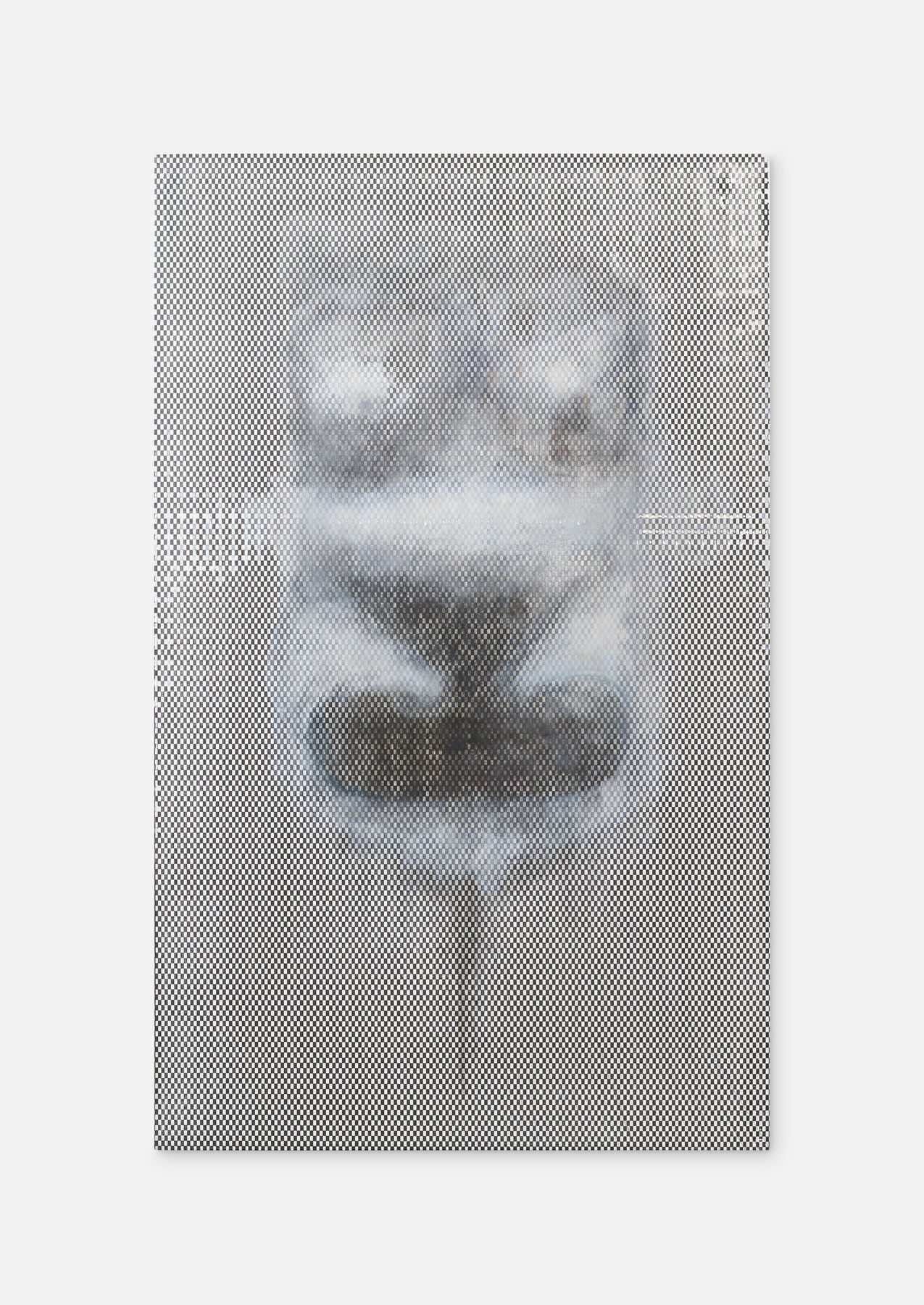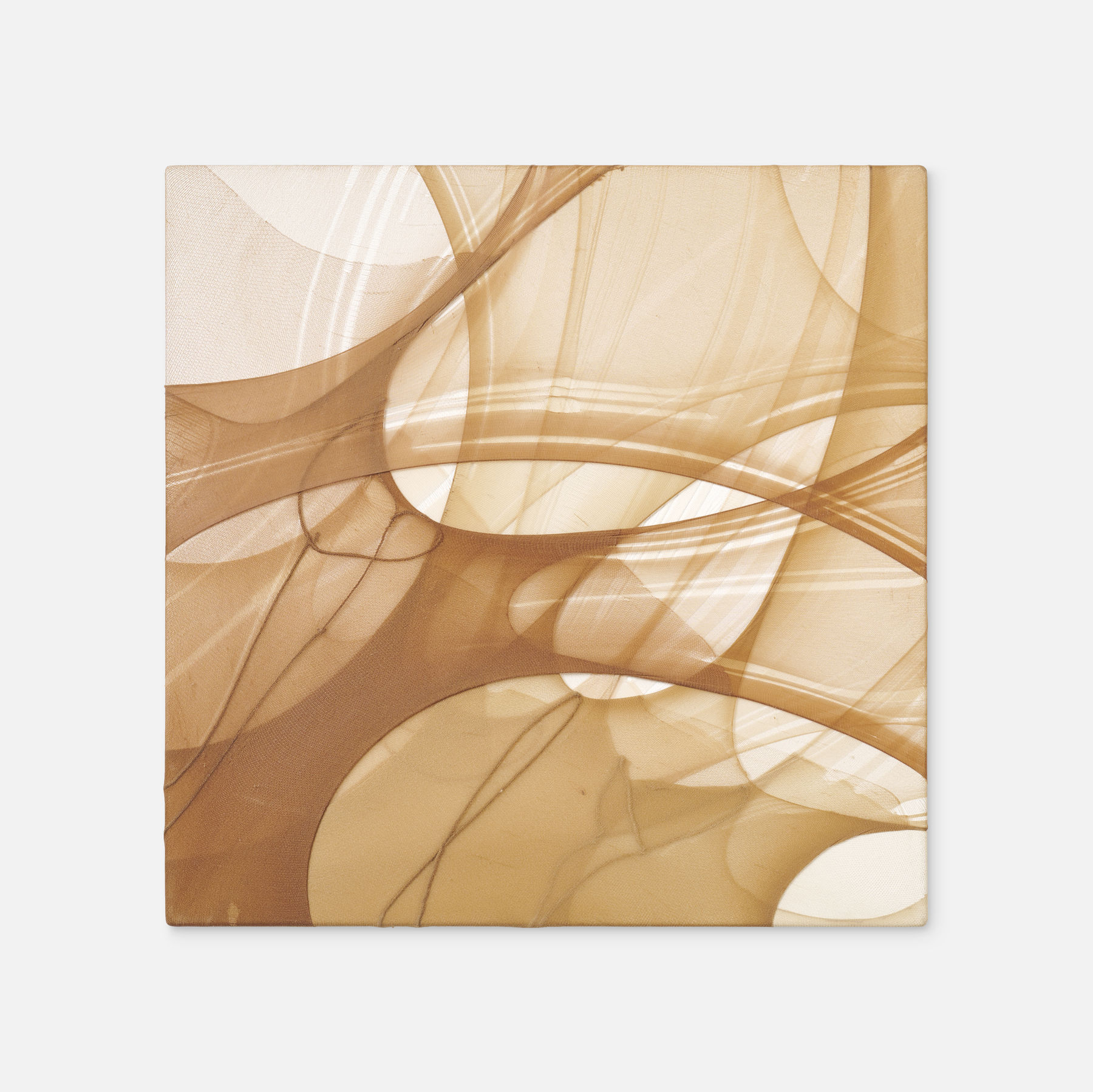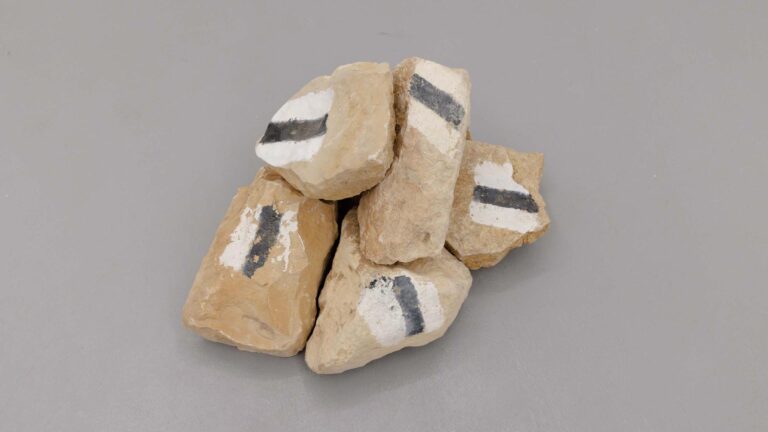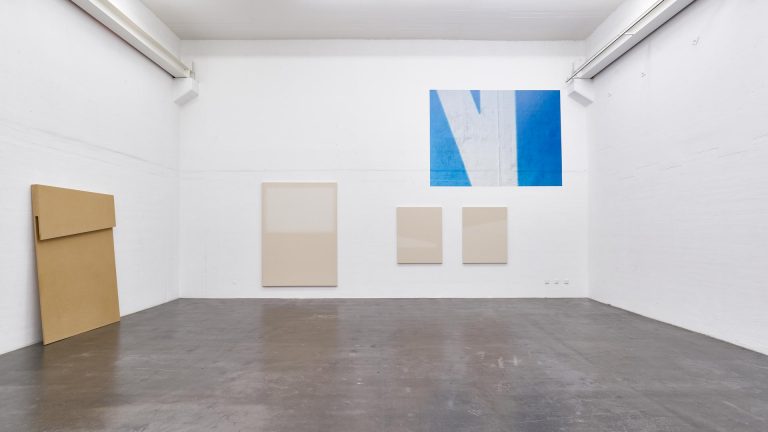Artists: Rebecca Ackroyd, Anna Blume, Leda Bourgogne, Zuzanna Czebatul, Melike Kara, Emma Lamorte, Nancy Lupo, Turiya Magadlela, Aileen Murphy, Lena Anouk Philipp, R.H. Quaytman, Frances Scholz, Ambera Wellmann, Jasmin Werner
Exhibition title: The Same As Ever, But More So.
Curated by: Miriam Bettin
Venue: Braunsfelder, Cologne, Germany
Date: September 8 – October 28, 2018
Photography: All photographs courtesy the artists and Braunsfelder
Rebecca Ackroyd, Anna Blume, Leda Bourgogne, Zuzanna Czebatul, Melike Kara, Emma Lamorte, Nancy Lupo, Turiya Magadlela, Aileen Murphy, Lena Anouk Philipp, R.H. Quaytman, Frances Scholz, Ambera Wellmann, Jasmin Werner
“It must have something to do with like keeping this balance between male and female artists up. So I can’t really explain it any other way. Have you noticed? The female artists are being killed off to kind of balance out the natural death of the male artists.” — Sophie von Olfers in Frances Scholz’ AMBOY
The group exhibition presents fourteen artists that work with different media and approaches. The themes and forms, however, intersect in their preoccupation with the body and (sexual) identity, between the conscious and the subconscious, reality and fiction, figuration and abstraction. The works are in a state of undefinability and evade classification by the viewer. The bodies and figures shown range from fragmented to completely decon-structed, merging into one another, transforming into hybrid beings, or completely dissolving into abstraction.
It is often the same variations, but in different media: such as Frances Scholz’s (*1962) paintings, which she treats like her film material. Editing and staging are part of her paintings that she applies to paper, canvas, plastic foil, and site-specific architecture. Much like in her films, where a fictional script encounters unplanned and improvised “real situations”, coincidence also plays a crucial role here—it thus remains unclear in the painting, what is composition and what is (planned) chaos.
Melike Kara (*1985) creates compositions in her paintings out of human figures, which—despite their strong but ambiguous facial expressions and presence—cannot be sexually or culturally classified. The representation of archetypal people offers the widest possible parameters for identification, which cannot be located in time or space. Every so often, features in the shape of traditional floral patterns suggest a possible context for the human forms.
Aileen Murphy (*1984) also plays with identification features. In her paintings, body parts—tongues, ears, noses, vaginas, hands, feet and breasts—collide in energetic movements and strong colors. The fragmented figures are hybrids who playfully and humorously move between abstraction and figuration.
Lena Anouk Philipp’s (*1985) forms are more strongly formulated: animal, human, and organic elements encounter each other with ease on paper and canvas in fable-like, visual narratives that arise from the subconscious.
Anna Blume (*1936) exhibits a ten-part series of drawings in the exhibition for the first time: self-portraits on paper that sketch the artist’s dream sequences and retell them in diary-like notes. In her works from the 1980s, she devoted herself to exaggerated, stereotypical images of housewives and the bourgeoisie. These were also ex-plored in the large-format photo series that she created throughout her life with her husband, Bernhard Blume.
Rebecca Ackroyd (*1987) creates sculptures and paintings somewhere between homely familiarity and physical discomfort. Orifices offer a view of the interior and, behind the perfect façade, constantly flickering flame graphics enhance the dystopian sense of imminent calamity.
A dichotomy between passionate devotion and destruction can also be recognized in Leda Bourgogne’s (*1989) work: canvases covered with fetishized textiles such as latex and velvet are cut in order to lovingly mend them in an act of making amends. As part of the exhibition, the artist is showing her depiction of a harlequin, inspired by Picasso’s “Seated Harlequin” (1905). The subversive figure with a multifaceted character eludes sexual de-termination and claims anarchic freedom.
Turiya Magadlela (*1978) forms abstract compositions from everyday yet conceptually loaded fabrics such as bedsheets, correctional service uniforms, and pantyhose, which she cuts, sews together, folds and stretches across canvases. They refer to personal experiences of woman- and motherhood, as well as to the Black South African history.
The everyday is the starting point for Nancy Lupo’s (*1983) sculptures: objects such as dustbins, fruits, furniture, and dog bowls confront the viewers with banality in order to then challenge them to adopt a new perspective. In doing so, physical qualities and human traits are revealed so that the items step beyond their status as objects and are associated with features such as power, eroticism, or vulnerability.
R.H. Quaytman’s (*1961) referential paintings are charged with philosophical, literary, and autobiographical content and codes. Her handcrafted plywood panels are the carriers of this information. Silkscreen prints of photographs and archive material mix with painterly styles and motifs. The individual works in the series, titled “chapters” in the form of a novel, are able to stand alone, but ultimately their form and content comprise a whole.
Zuzanna Czebatul’s (*1986) lively formal language quotes and plays with psychedelic and club culture aesthetics, as well as commodity fetishism and commercialization. In the seductive act of appropriation, her works convey a sexiness and a desire to possess, as well as make a showcase of our hedonistic capitalist attitudes and ten-dencies.
Smooth, shiny surfaces of lapdogs, white horses and cherubs, bodies intertwined in the act of love, capturing the moment when above and below, space and time, the self and the other dissipate. The fascination with Meissen porcelain and still lifes is evident in Ambera Wellmann’s (*1982) paintings. However, these perfect surfaces are always thwarted by moments of irritation: distorted proportions and deformed facial features indicate a destructive force.
Emma LaMorte (*1984) displays a work created especially for the space: in her site-specific textile wall works, she creates landscapes and characters that appear in her partly personal, partly fictional narratives. Her often dystopian scenarios, in conjunction with the traditional craft of sewing, appear strangely timeless, somewhere in between science fiction, medieval legends, and mythology.
In her sculptural artistic practice, Jasmin Werner (*1987) juxtaposes symbols, rituals, and ambiguities from culture, religion, and sexuality in her self-designed (reference) systems. It is a subtle and ambiguous game with codes: concealment and desire, innocence and sin, eternal youth and transience, rise and fall. The iconograph-ically charged staircase is her leitmotif: unstable modular systems made from aluminum and threaded rods act as a promising career ladder, or a stairway to heaven.
The exhibition title is quoted from Jessa Crispin’s “Why I Am Not a Feminist. A Feminist Manifesto” (2017), in which Crispin criticizes current feminism for its interchangeability: it is about individualism, self-centeredness, social media compatibility, and is no longer a radical, even sometimes unpleasantly antagonistic movement.
In addition to loans from contemporary artists, the exhibition also includes works from the Braunsfelder Family Collection.
-Miriam Bettin



